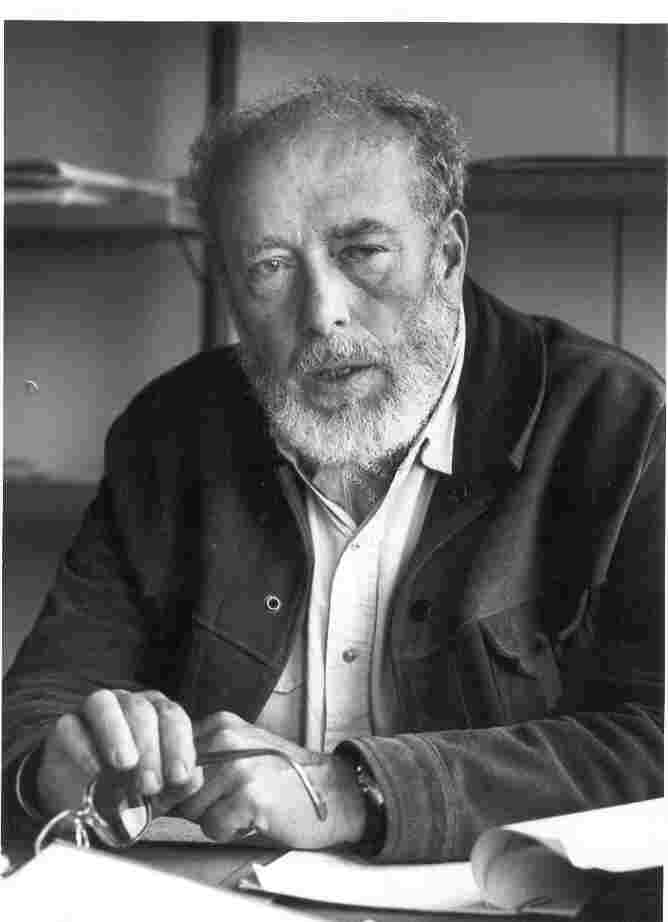The Genealogy and Teleology
The genealogical, how ideas originate and develop, in the Nietschean sense of the "Genealogy of Morals" is simultaneously TELEOLOGICAL, a notion that distinguishes the Greek West from the Tamil East and perhaps along with it the whole of the East.
But this, it must be stated immediately, is NOT for the world, for World History but for the episodizing subject. There is NO END as such for the World and towards which it is moving irrevocably , the Spirit is NOT trying to realize itself in World History as Hegel so boldly declared. The Spirit that has some kind of meaning in World History is NOT AT ALL a Spirit for imperfections of whatever kind are inconsistent with the Being of the Spirit.
The Cosmos is the Dance of BEING and that too out of GRACE, a LOVE that is wholly and totally spontaneous, an overflowing that seeks nothing in return for BEING is Perfect, Complete in Himself, the ParipuuraNam.
However there is an END, an ABSOLUTE END as the distant horizon, the NOT-YET but which is a distinct POSSIBILITY for the episodizing self which is the MEANING of its EXISTENCE characterized by a sequential and genealogical structure.
The BEING-Present -AS-THE -WORLD, the Enlil of the Sumerians, the Purusha of Purusha Suktam, the VishNu of later times, the Sathaacivam of the Saivas , is not for Itself but for the infinite number of psychic entities ensnared in the historical flux , not knowing how to extricate themselves, i.e. the notorious Samsara so widely present in the Indian thinking. But BEING (or SIVA) being completely saturated (ParipuuraNam) is not only OUTSIDE the historical flux but also its Ground, the UNMOVED MOVER of Aristotle.
This Unmoved Mover moves the world (understood metaphorically as a DANCE) in order to facilitate the psychic entities effect existential episodizations and through that escape from the snares that throws them into eternal historicity. It is this way of being of BEING that the DANCE metaphor of Siva Nadaraja captures. Only THAT which is outside history but nevertheless IS in the world without being-in-it , can facilitate the fettered psychic entities to escape from the endless birth and death fostering historicity, the Samsara i.e.. attain the releasement.
The notion of GENESIS here is NOT simply morphological, biological, phylogenetic etc. as in the purely evolutionary accounts. What is peculiar here is that something NEW emerges because of existential episodization which involves the Destruction of the inherent IGNORANCE, the anjnjaanam, the Avidya . The Y that emerges because of the episodization, is such that there is now LESS Metaphysical Ignorance compared to X, that which is episodized and hence because of that less of ANavam in the interiority of the psychic entity. Because of this the genealogy is PROGRESSIVE and inherently TELEOLOGICAL because it moves towards the absolute destruction of IGNORANCE, of Avidya, of Anjnjaanam etc.
But what kind of progress that we are talking about here?
The genealogy is not simply of morals but something more fundamental than that. It is inherently PURIFICATIONAL, each episodization makes the self LESS IMPURE and indirectly more ethically sensitive but finally transcending even the bipolar and judgmental disposition ( the IRUVINAI of Saiva Siddhanta), the bondage to Karma as such. As we progress we become less and less IMPURE and looking at the same phenomenon positively, we become more and more Human and finally Spiritual with the divine sparks shining brilliantly as part of the personality.
The acts of episodization are then acts of self -cleansing, of absolving from within the delimiting fetters, the chains that imprison one into the interminable Samsara, the historicity. The kind of genealogy that Hermeneutic Counselling emphasizes and promotes TRANSFORMS the person so that he is a BETTER person , a better individual.
Episodizing thus is NOT destruction, a dismantling or even deconstruction , a pure act of wanton dissipation but rather a DISCONSTRUCTION, a restructuring of Consciousness or Understanding that along with assimilating the Truths of the past also embodies something NEW as Gift from BEING, the ARUL of BEING.
Thus Disconstruction involves UNFOLDMENT, the attainment of something NEW as a GIFT from BEING.
The evolution of the psychic entities , the evolution of the mind, is that of UNDERSTANDING and hence hermeneutical . Only those whose understanding is deep and profound and of course an understanding which is also an understanding of TRUTH are the developed. The one who shines in such an understanding, the Civanjnam, is the true Teesikan, the illusrious ., the Brahmanah, who is the Sattyakaama ( the Truth lover) and who despite being born to a woman who did not know who his father was ( because she slept with several men ), persists in saying what is true and because of Yajnavalkya called him a Brahmanah (Brihadaranyaaka Upanisad)
A person is higher only because he/she has a deeper and more profound understanding of Existence , whatever the birth. The UNDERSTANDING is the criteria or laksanana that earns him a higher social standing. And this has nothing to with birth or lineage - it is purely a matter of individual achievements.
ULLAGANAR
( editing and re-paragraphing by his student )
( picture taken from wikipedia with thanks )





